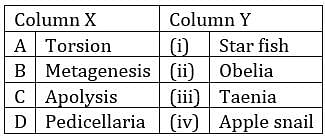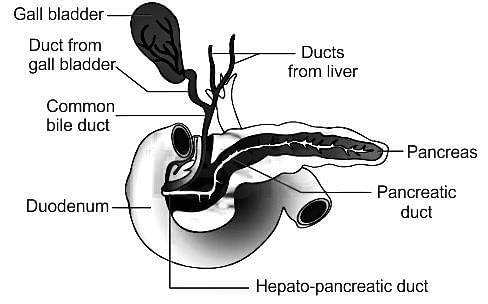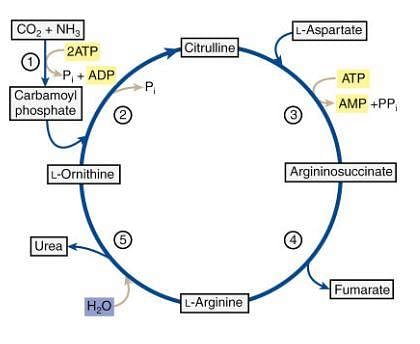CSIR NET Life Sciences Mock Test - 7 - CSIR NET Life Science MCQ
30 Questions MCQ Test - CSIR NET Life Sciences Mock Test - 7
Kanak ranks ninth from the top and  from the bottom in a class. How many students are there in the class?
from the bottom in a class. How many students are there in the class?
 from the bottom in a class. How many students are there in the class?
from the bottom in a class. How many students are there in the class?If 1/4, 1/x and 1/10 are in HP, then find the value of x.
| 1 Crore+ students have signed up on EduRev. Have you? Download the App |
In _______ communication, transmission occurs through extracellular fluid and primarily limited to local area ?
Polythene chromosomes are found because of _____?
Which of the following form of lipids are also referred as neutral lipids?
Which of the following has a major role in the regulation of chloroplast movement?
Which of the following is the best breeding method for animals which are below average in productivity?
Which of these functions is not regulated by intracellular hormone-receptor complexes?
If a four nucleotide sequence codes for an amino acid instead of three theoretically how many unique amino acids could be coded by such a system:
If VV produces violet flowers and vv produces white flowers, what will be the phenotype and genotype of the F1 progeny?
Where are the parental genotypes mentioned in a Punnett square?
Coagulation of blood in blood vessels is prevented by:
The β cells in the pancreas secrete insulin. What do α cells secrete?
In which of the following viruses, the flow of information is opposite ie, RNA to DNA?
Which of the following is the most reliable method of soil remediation?
The net reproductive rate (R0) is 1.5 for a given population. If Nt, the population of females at generation t, is 500, then what will be the population of females after four generations (Nt+4)?
The terms expressing some of the developmental events or specific body structures are given in column X and the names of animals that are associated with them in column Y:

The correct match of the terms in column X with the name of animals in column Y is:
During wing development in chick, if Apical Ectodermal Ridge (AER) is removed, the limb development ceases, on the other hand placing leg mesenchyme directly beneath the wing AER, distal hindlimb structures develop at the end of the wing, and if limb mesenchyme is replaced by non-limb mesenchyme beneath AER, the AER regresses. This may demonstrate that:
(A) the limb mesenchyme cells induce and sustain AER.
(B) the mesenchyme cells specify the type: wing or limb.
(C) the AER is responsible for specifying the type: wing or limb.
(D) the AER is responsible for sustained outgrowth and development of the limb
(E) the AER does not specify the type of wing or limb
Which combination of the above statements is demonstrated by the experiment?
What are the complex organic remains such as dead animal remains, dead plant remains, and fecal matter called?
Which of these features cannot help us differentiate between C3 and C4 plants?
Which of the following options correctly represents the lung conditions in asthma and emphysema, respectively ?




 (Kanak position from the top)
(Kanak position from the top)  (Kanak position from the bottom)
(Kanak position from the bottom) 



 students in the class.
students in the class.


 (given),
(given), 

 population at time
population at time 
 population at initial time
population at initial time
















